
TAGS: Singularity, IOT, AIOT, Transhumanism, Post Human, 5G, Graphene, Brain Initiative
Do you remember the movie ‘Tron’? if not, maybe your remember: ‘Arcade’, ‘eXistenZ’, ‘Brainscan’ and ‘The Lawnmower Man’, or even Wreck It Ralph. What I am getting at, is a human or what once was a human, actually becoming part of a video game. That is more like what will happen to YOU in the SINGULARITY they want to bring about.
I know they have you convinced that this new REVOLUTION will make you a SUPER HUMAN. Enhanced Human. That is a LIE! You are currently in the process of becoming one with the machine. Transhumanism is the first stage… the next level of progression is POST HUMAN. YOU will no longer be HUMAN. You will be merged with the machine, into a one hive mind. And once the 5G is activated to set it all in motion… there will be no turning back.
The Internet of Things (IoT) revolution will make terms like ‘e-commerce,’ ‘the Net’ and ‘WWW’ obsolete. In the CYBER POSTHUMAN world everything is ONE. ALL is connected. YOU will not exist. The word “I” will no longer have ANY MEANING. The AI will control EVERYTHING. Every thought, word and deed. Your every move, every breath, every heart beat will be monitored and controlled. You will be part of the borg, the hive. You will have no need of currency, your “DATA” will be your currency. The AI will assign your tasks and reward you if you perform them, which will be monitored. The nanobots within you will be able to extend your life indefinitely. So, you will be trapped in cyber space…forever!!
I don’t know about you, but to me, this sounds like the most horrendous nightmare imaginable. Perhaps that is why the bible says…
And in those days shall men seek death, and shall not find it; and shall desire to die, and death shall flee from them. Revelation 9:6
spacer
BE SURE YOU ALSO VIEW: Great RESET – Internet of Bodies
spacer
 PCR TESTS, NANO TECH, INTERNET OF THINGS, AND FUTHER ENSLAVEMENT.
PCR TESTS, NANO TECH, INTERNET OF THINGS, AND FUTHER ENSLAVEMENT.
Take these warnings seriously.
See the how the Gematria matches up to the plot and watch how the video I make back in 2019 fits to every deatail we now live.

spacer
The Technocrat’s lust for 5G and Internet of Things is so strong that they are perfectly willing to ignore all human concerns, protests and especially health concerns
Digital Slavery: 5G, Internet of Things and Artificial Intelligence
By Patrick Wood ——Bio and Archives—August 27, 2019

Technocracy was originally defined as “the science of social engineering, the scientific operation of the entire social mechanism to produce and distribute goods and services to the entire population…” (The Technocrat Magazine, 1938)
Planted as a seed in 1932, Technocracy has grown into a tree so big that it literally covers the earth today: that is, through the rebranding and repurposing by the United Nations as Sustainable Development, Agenda 21, 2030 Agenda, New Urban Agenda, etc.
Furthermore, it is like a hydra-headed monster with many tentacles and expressions, but we must never lose sight of the common purpose of all: kill the world’s economic system of Capitalism and Free Enterprise and replace it with the vacuous economic system, Sustainable Development.
Since Technocracy is a resource-based economic system, people like you and I are considered as mere resources on the same level as livestock on a ranch. If people are just animals who selfishly consume resources, then they must be monitored, managed and limited in their consumption.
To this end, Technocracy originally called for total surveillance of all people, all consumption, all production and all energy consumed in every activity. The outcome was to control all consumption and production. This level of technology didn’t exist in 1932, but it does today!
When the surveillance network in America (and the world) is finally functional, the command and control system will become reality, resulting in a Scientific Dictatorship that exceeds even Orwell’s Nineteen Eighty Four or Huxley’s Brave New World.
What is the last cog in the gearbox necessary to bring this about? In short, 5G!
Why? When you consider the massive amount of data that is waiting to be collected from the widespread Internet of Things, facial recognition cameras, Smart City sensors, self-driving vehicles, etc., they all lack one element: real-time connectivity. 5G solves this!
If you listen to any 2019 speech given by the CEO of Verizon, T-Mobile or AT&T, you will hear them rave over how 5G’s real-time connectivity is going to light up the Internet of Things like a Macy’s Christmas tree. You will hear the words “transformative” and “disruptive” over and over.
What’s the big deal with “real-time” connectivity? Artificial Intelligence (AI).
It is said that AI without data is as inert and useless as a pile of rocks. AI needs data to “learn” and then to take action. Up until now, Technocrats who create AI programs have had to use historical data for learning and that’s about all; forever learning but never doing.
The “holy grail” of Technocrats is to use their AI on REAL-TIME DATA. Real-time analysis can then close the control loop by feeding back real-time adjustments. This has never been done in the history of the world, but thanks to 5G, Technocrats everywhere are salivating to dive into the control business; that is, the “scientific operation of the entire social mechanism.”
Let me give you an example. Say you are an engineer and you designed and built a state-of-the-art fire truck that will revolutionize firefighting. There it sits on display for everyone to see. You start the engine and everyone is duly impressed, but still, it just sits there. Without water (e.g., the data) to pump through the numerous hoses, everyone, including yourself, can only imagine of what it would be like. In fact, your engineering dream is quite useless until you take it to an actual, real-time fire and blast away with the water cannons to douse the flames. Then you will know if you were successful or not.
Scuttle the Technocrat’s ability to establish a Scientific Dictatorship
Technocrats understand this. They know that 5G will fully enable their AI inventions and dreams. Unfortunately for us, they also know that it will enable the feedback loop to control the objects of surveillance, namely, US!
The Technocrat’s lust for 5G and Internet of Things is so strong that they are perfectly willing to ignore all human concerns, protests and especially health concerns.
Perhaps now you can understand how and why they are living out the old nautical phrase, “Damn the torpedoes, full speed ahead!” Risks don’t matter. Danger doesn’t matter. Collateral damage doesn’t matter.
To the extent that we citizens can nullify the rollout and implementation of 5G, we will scuttle the Technocrat’s ability to establish a Scientific Dictatorship. Truly, it is we who should be mounting the counter-attack with our own cry of “Damn the torpedoes, full speed ahead!”
spacer

Internet of Things definition
Why Google’s Internet of Things definition is inaccurate
Have you tried to find a comprehensive Internet of Things definition? Surprisingly, the Google answer is the following: “a proposed development of the Internet in which objects have network connectivity, allowing them to send and receive data”.
Wait. The Internet of Things in 2014/2015 is certainly not a “proposed development” anymore! The Internet of Things is REAL.
And Google should know this better than anyone else. In January 2014, Google acquired Nest, a company currently selling more than 100,000 smart thermostats per month. As TechCrunch recently put it: “at this stage there’s no putting the [Internet of Things] genie back in the bottle”. (link)
There is plenty of more evidence: Wearable devices like the Jawbone Up have become mass market. The industrial conglomerate General Electric recently announced that they are making $1 billion in IoT-related revenue in 2014. (link)
Some well-known examples for Internet of Things applications today are:
- Wearable devices/fitness trackers (e.g., Jawbone Up, Fitbit, Pebble)
- Home Automation (Examples: Nest, 4Control, Lifx)
- Industrial asset monitoring (GE, AGT Intl.)
- Smart energy meters
A better Internet of Things definition
So what is a better Internet of Things definition? McKinsey short definition appears quite logic:
Internet of Things = “Sensors and actuators embedded in physical objects are linked through wired and wireless networks, often using the same Internet Protocol (IP) that connects the Internet.“
This Internet of Things definition leads to an interesting question: If the Internet of Things is not necessarily part of the Internet as we know it, why then is it called Internet of Things?
A brief history of the Internet of Things
The birth of IoT

Kevin Ashton, inventor of the Internet of Things
The term Internet of Things is 16 years old. But the actual idea of connected devices had been around longer, at least since the 70s. Back then, the idea was often called “embedded internet” or “pervasive computing”. But the actual term “Internet of Things” was coined by Kevin Ashton in 1999 during his work at Procter&Gamble. Ashton who was working in supply chain optimization, wanted to attract senior management’s attention to a new exciting technology called RFID. Because the internet was the hottest new trend in 1999 and because it somehow made sense, he called his presentation “Internet of Things”.
Even though Kevin grabbed the interest of some P&G executives, the term Internet of Things did not get widespread attention for the next 10 years.
IoT takes off
The concept of IoT started to gain some popularity in the summer of 2010. Information leaked that Google’s StreetView service had not only made 360 degree pictures but had also stored tons of data of people’s Wifi networks. People were debating whether this was the start of a new Google strategy to not only index the internet but also index the physical world.
The same year, the Chinese government announced it would make the Internet of Things a strategic priority in their Five-Year-Plan.
In 2011, Gartner, the market research company that invented the famous “hype-cycle for emerging technologies” included a new emerging phenomenon on their list: “The Internet of Things”.
The next year the theme of Europe’s biggest Internet conference LeWeb was the “Internet of Things”. At the same time popular tech-focused magazines like Forbes, Fast Company, and Wired starting using IoT as their vocabulary to describe the phenomenon.
In October of 2013, IDC published a report stating that the Internet of Things would be a $8.9 trillion market in 2020.
The term Internet of Things reached mass market awareness when in January 2014 Google announced to buy Nest for $3.2bn. At the same time the Consumer Electronics Show (CES) in Las Vegas was held under the theme of IoT.
The above graph shows impressively how the term “Internet of Things” has outgrown all other related concepts in popularity.
Disambiguation IoT vs IoE vs M2M vs Others
So “Internet of Things” is the most popular term in describing this new interconnected world.
An overview of related concepts
Cisco has been driving the term Internet of Everything (IoE). Intel initially called it the “embedded internet”.
Other terms that have been proposed but don’t mean exactly all the same are:
|
|
How do these terms relate to each other? And how do they differ from the Internet of Things definition?

How the concepts differ from each other
M2M
The term Machine to Machine (M2M) has been in use for more than a decade, and is well-known in the Telecoms sector. M2M communication had initially been a one-to-one connection, linking one machine to another. But today’s explosion of mobile connectivity means that data can now be more easily transmitted, via a system of IP networks, to a much wider range of devices.
Industrial Internet (of Things)
The term industrial internet is strongly pushed by GE. It goes beyond M2M since it not only focuses on connections between machines but also includes human interfaces.
Internet of Things (IoT)
IoT has yet a wider reach as it also includes connections beyond the industrial context such as wearable devices on people.
Internet (as we know it)
In the above graph, the internet is a fairly small box. In its core it connects only people.
Web of Things
The Web of Things is much narrower in scope as the other concepts as it solely focuses on software architecture.
Internet of Everything (IoE)
Still a rather vague concept, IoE aims to include all sorts of connections that one can envision. The concept has thus the highest reach.
Industry 4.0
The term Industry 4.0 that is strongly pushed by the German government is as limited as the industrial internet in reach as it only focuses on manufacturing environments. However, it has the largest scope of all the concepts. Industry 4.0 describes a set of concepts to drive the next industrial revolution. That includes all kinds of connectivity concepts in the industrial context. However, it goes further and includes real changes to the physical world around us such as 3D-printing technologies or the introduction of new augmented reality hardware.
Further observations
Both M2M as well as the industrial internet are not opposing concepts to IoT. In fact both are a subset of the Internet of Things with a narrower reach.
spacer
FOR THE REAL TRUTH ABOUT THE INTERNET OF THINGS AND WHAT IT MEANS FOR YOU, visit my article:
Great RESET – Internet of Bodies
GRAPHENE OXIDE IN US FOR THE 5G INTERNET OF THINGS
https://www.cam.ac.uk/research/news/graphene-shown-to-safely-interact-with-neurons-in-the-brain
https://www.whitedate.net/covid19-vaccine-test-poison-magnetism-depopulation-5g-graphene-oxide/
Thank You Everyone! & Dr Mike Yeadon, PhD Latest Warning
Sub to my channel here – https://www.youtube.com/channel/UC0YiuZkKvsTVR8HRzsCY2DQ
Sub to my channel here – https://odysee.com/@RussBrown:f
Sub to my channel here – https://153news.net/view_channel.php?user=RussBrown
Patreon supporters get a daily video from me with real news & research updates at 8pm EVERY day!
Support me on PATREON – https://www.patreon.com/russellbrown
TELEGRAM CHANNEL –
BACK UP YOUTUBE channel 
The Genocide Act 1969(c 12) was an Actof the Parliament of the United Kingdom. It gave effect to the Convention on the Prevention and Punishment of the Crime of Genocide approved by the General Assembly of the United Nations on 9 December 1948. The Act was repealedfor England and Walesand Northern Irelandon 1 September 2001.
spacer
In 2013, Obama signed the BRAIN INITIATIVE, to give major funding for scientists to reverse engineer the human mind. How else could you feasibly map out the entire brain without unwitting guinea pigs? You CANNOT! You need to map out every sector of the brain through real, authentic joys and traumas, ups and downs, etc.. by real human beings, in real time, using staged street theater scenarios and microwave weapons / DEW (Directed Energy Weapons).
This also ties into chemtrails, where they are spraying the sky with nano-tech / nano-bots that filter down into the hydrosphere or food supply (as well as us simply breathing it in), and those nano are then programmed to go into the brain and tie themselves to the neurons. At this point, the humans are tied (quantum mechanics) remotely to supercomputers, which are capturing, uploading and integrating the synaptic responses in real time, so that the A.I. can learn how to be more anthropomorphic.
Dr. James Giordano said in one of his lectures, *”What we’re here to talk about is the fact that the brain is and will be the 21st century battle-scape in many ways. End of story! You will encounter some form of neuro-cognitive science that has been weaponized, not only in your military career but also in your personal and professional lives. It is valuable, valid and already in operational play. The Brain is the current and future battle-space. What’s new about this is the in-close nature. Increasingly we’re not seeing these as weapons of mass destruction (WMDs) against gross aspects of the population. More specifically perhaps, might be targeting individuals on a level that allows either direct attribution or covert (stealth) engagement with non-attribution.*
*To talk about what brain science is, let me give you a brief background on this field that is now called neuro-science. It has only been in existence around 40 years and I know that because I’ve been in the field for 38 of those 40 years. It is increasingly becoming a global, multi-national, independent and worldwide endeavor… We can disrupt an individual from the level of their cell to their system, and many other levels, and can even disrupt the entire social fabric. Targeting individuals by changing or eliminating that target with very little attribution or trace and leave prior to any attribution. We can influence the attitudes, beliefs, thoughts, emotions and functions of the brain. Look at the power of what understanding the tools and techniques that neuro-science affords.*
What has gone to the drawing board to reality is this. The use of neural-interfacing, physiological interfacing through remote controlled, small cell systems, to create a ‘NANO-SWARM’ of bio-penetrative materials that you cannot see, and integrate themselves through a variety of membranes and wherever else (nose, ears, eyes, etc..) and it can be done at such a level that their presence is almost impossible to detect. And as such the attribution becomes very hard to demonstrate. The idea here is to put minimal sized electrodes in the network within the brain, to be able to read and write into the brain function…, in REAL TIME…. REMOTELY.”
Dr. James Giordano continues by saying,
“What do we do with the tools and techniques we (Government agencies) truly have? What can we do and what should we do? Can we create designer brains? Are they targetable after birth? Are they modifiable throughout the life-span? The answer to all of this is YES. I give you no science fiction in this lecture I only give you Science fact. So what happens when we ultimately reverse engineer the brain (mapping it out completely), and develop a machine that has cognitive and emotional capability? Before you say OH that is the stuff of science fiction! Well I’m here to tell you… No it’s not!”
(end quote)
Essentially, they’re making cognitive models and digital copies of your ‘soul’ (will, intellect and emotion) by reverse engineering your brain through provoking synaptic responses to daily trauma and/or street theater scenarios. These E-copies or digital copies of ‘you’ are then uploaded and integrated to supercomputers as RNM (Remote Neural Monitoring) data, where the A.I. learns to be more like a human (anthropomorphic).
This also ties into chemtrails, where they are spraying the sky with nano-tech / nano-bots that filter down into the hydrosphere or food supply (as well as us simply breathing it in), and those nano are then programmed to go into the brain and tie themselves to the neurons. At this point, the humans are tied (quantum mechanics) remotely to supercomputers, which are capturing, uploading and integrating the synaptic responses in real time, so that the A.I. can learn how to be more anthropomorphic.
Dr. James Giordano said in one of his lectures, *”What we’re here to talk about is the fact that the brain is and will be the 21st century battle-scape in many ways. End of story! You will encounter some form of neuro-cognitive science that has been weaponized, not only in your military career but also in your personal and professional lives. It is valuable, valid and already in operational play. The Brain is the current and future battle-space. What’s new about this is the in-close nature. Increasingly we’re not seeing these as weapons of mass destruction (WMDs) against gross aspects of the population. More specifically perhaps, might be targeting individuals on a level that allows either direct attribution or covert (stealth) engagement with non-attribution.*
*To talk about what brain science is, let me give you a brief background on this field that is now called neuro-science. It has only been in existence around 40 years and I know that because I’ve been in the field for 38 of those 40 years. It is increasingly becoming a global, multi-national, independent and worldwide endeavor… We can disrupt an individual from the level of their cell to their system, and many other levels, and can even disrupt the entire social fabric. Targeting individuals by changing or eliminating that target with very little attribution or trace and leave prior to any attribution. We can influence the attitudes, beliefs, thoughts, emotions and functions of the brain. Look at the power of what understanding the tools and techniques that neuro-science affords.*
What has gone to the drawing board to reality is this. The use of neural-interfacing, physiological interfacing through remote controlled, small cell systems, to create a ‘NANO-SWARM’ of bio-penetrative materials that you cannot see, and integrate themselves through a variety of membranes and wherever else (nose, ears, eyes, etc..) and it can be done at such a level that their presence is almost impossible to detect. And as such the attribution becomes very hard to demonstrate. The idea here is to put minimal sized electrodes in the network within the brain, to be able to read and write into the brain function…, in REAL TIME…. REMOTELY.”
Dr. James Giordano continues by saying,
“What do we do with the tools and techniques we (Government agencies) truly have? What can we do and what should we do? Can we create designer brains? Are they targetable after birth? Are they modifiable throughout the life-span? The answer to all of this is YES. I give you no science fiction in this lecture I only give you Science fact. So what happens when we ultimately reverse engineer the brain (mapping it out completely), and develop a machine that has cognitive and emotional capability? Before you say OH that is the stuff of science fiction! Well I’m here to tell you… No it’s not!”
(end quote)
Essentially, they’re making cognitive models and digital copies of your ‘soul’ (will, intellect and emotion) by reverse engineering your brain through provoking synaptic responses to daily trauma and/or street theater scenarios. These E-copies or digital copies of ‘you’ are then uploaded and integrated to supercomputers as RNM (Remote Neural Monitoring) data, where the A.I. learns to be more like a human (anthropomorphic).
 451:40:12
451:40:12“Their” Future! Is Sick!
No Wonder People are waiting in line to take the jab. We are under attack in so many ways! GOD Bless us all and stay strong!
http://www.braininitiative.org/
https://www.braininitiative.nih.gov/
https://obamawhitehouse.archives.gov/BRAIN
http://www.kavlifoundation.org/about-brain-initiative
https://www.nsf.gov/news/special_reports/brain/initiative/
https://www.darpa.mil/program/our-research/darpa-and-the-brain-initiative
https://grants.nih.gov/grants/guide/rfa-files/RFA-NS-19-002.html
https://bioethicsarchive.georgetown.edu/pcsbi/sites/default/files/GrayMatter_V2_508.pdf
Truly frightening. No longer do you need to be injected with ‘smart dust’ or ‘nanogel’ to be controlled. These adenovirus, Genetically Engineered viruses, enter without being implanted and are light sensitivity activated to control in people; fear, pain, reward, wakefullness and social behaviours.
They are also called DREADDs, Designer Receptors Exclusively Activated Designer Drugs 9 months, 2 weeks ago
spacer
(World Orders Review feat. Level9News: https://www.bitchute.com/video/wTmgfhV7gvhb/
Published August 26, 2015
Obama’s BRAIN Initiative taps into many nefarious areas as you will see. However, it also provides a method to control the evolution of humanity or possibly, even de-evolution of mankind through the total command and control of the short term future of humanity. 12 months ago
1 year, 5 months ago
spacer
Published August 26, 2015
Obama’s BRAIN Initiative taps into many nefarious areas as you will see. However, it also provides a method to control the evolution of humanity or possibly, even desp-evolution of mankind through the total command and control of the short term future of humanity. 1 year, 2 months ago
spacer
Hopefully you will find this informative or at the least entertaining. Some serious information of course it all depends on one’s perspective. How you see is really up to you.
Thanks to my wife for helping me we really had a good time making this for you. special thanks to my friend as well.
August 27, 2016 11 months, 3 weeks ago
Obama’s 2013 “Brain Initiative” (Human Connectome Project), The Singularity and Targeted Individuals
In 2013, Obama signed the BRAIN INITIATIVE, to give major funding for scientists to reverse engineer the human mind. How else could you feasibly map out the entire brain without unwitting guinea pigs? You CANNOT! You need to map out every sector of the brain through real, authentic joys and traumas, ups and downs, etc.. by real human beings, in real time, using staged street theater scenarios and microwave weapons / DEW (Directed Energy Weapons).
![]()
End-to-end IoT for Connected Manufacturing Enterprise Solutions
Thursday, September 17 | 8:00 a.m. CST/3:00 p.m. CET | 90 min. Session
The race to build future-ready, connected enterprises has led many manufacturers to apply advanced technology and capitalize on a fast-changing, disruptive market.
To help manufacturers seize these new growth opportunities, we’re hosting an exclusive interactive virtual roundtable for executives featuring insights from Google Cloud, Forrester & Atos. This 90-minute guided discussion will focus on how to take IoT projects from pilot to production and scale them with speed across your organization.
By sharing successes and key learnings from the industry, we’ll explore how a smart portfolio of enterprise solutions can free technology from connectivity restraints and enable businesses to build the right digital infrastructure to deliver customer-centric services.
*Please note, this event is private and invite-only. The discussion will not be open to the general public.
How to Invest in the “Internet of Things”
There are many industries and companies that aim to advance this experience. One growing market, known as the Internet of Things (IoT), connects our household or commercial items to a wireless network by embedding them with electronic, software, or sensor technology. This network of devices allows us to take the next step into a wireless world that relies less and less on direct human-to-computer interaction.
You might actually be using products in the IoT without knowing it. Some common examples include the remote operation of a house’s security system, wearable motion and activity tacking products, and even public trash bins that automatically alert a municipality when it is full.
The Internet of Things is definitely present in our everyday lives right now, but it also has a lot more room to grow. According to research firm IDC, via the Wall Street Journal, the IoT market could nearly triple in the coming years. In 2014, the global IoT market was worth $655.8 billion, but it could reach up to $1.7 trillion by the year 2020.
ETF Success
Perhaps the easiest way for investors to make a play on the Internet of Things is with a themed ETF. If that interests you, check out Global X Internet of Things Thematic ETF SNSR, the first IoT-related ETF on the market.
Big Name Patent Holders
One of the most important steps a company needs to take to capitalize on emerging technology is locking down patents at the earliest possible point. In regards to the Internet of Things market, we’ve seen a lot of companies filing for patents that put them in a good position to grow as the IoT grows.
One such company is technology behemoth Apple AAPL. Apple holds a patent named “Local Device Awareness”, which describes an automated relationship between multiple close-range devices. The technology could be used for position tracking, such as finding a lost remote control, or even proximity-based virtual reality, like a video game that depends on one’s actual position in a room.
Another major IoT patent holder is IBM IBM. Primarily an information technology-focused company, IBM figures to be a major player in the IoT. Currently, IBM holds a patent regarding data filtering in Internet of Things devices, which describes a process in which devices receive and interpret information. This patent puts IBM amongst the frontrunners in technology that allows devices to communicate without human interaction.
Furthermore, IBM just announced an Internet of Things partnership with Cisco Systems CSCO. IBM will implement its Watson technology into Cisco’s wide network of edge devices and end points in an effort to provide real-time feedback and data for the oil & gas, manufacturing, shipping, and mining industries.
Today’s Leading Products
While patents are important for future growth and development, we also have to look at the already-available IoT devices. Again, we are looking at some of the world’s biggest tech companies here.
One of the more obvious industry leaders is Alphabet Inc. GOOGL and its line of Nest home monitoring products. Alphabet, under the Google name at the time, acquired Nest for $3.2 billion in early 2014, and since then the brand has become one of the biggest names in home automation with its smart thermostats, smoke detectors, and safety cameras.
Another leader in the IoT market right now is Amazon AMZN. Amazon’s Dash Buttons, which allow users to re-order specific products with the click of an actual physical button that can be placed anywhere in the home, could be considered an entry-level IoT device. Additionally, the company’s Echo smart speakers, which utilize its Alexa home connectivity technology, are probably the most popular consumer IoT product on the market right now
Google actually recently responded to Amazon’s Echo speaker with a home automation device of its own, the Google Home. The Home runs on Google’s new voice assistant, which also powers its new Pixel phone and represents Google’s new era of hardware/software interaction.
Finally, Samsung SSNLF is another major player with its SmartThings brand. Samsung SmartThings are a series of in-home products, ranging from electric outlets to motion sensors, which allow for easier control of a users’ entire home.
Unsung Heroes
The technology giants will certainly be leaders in the IoT market, but investors should also look into the smaller companies that will be the manufacturers of the actual hardware. For every product IoT product sold by Apple, the supplier who built one of the components within the device also stands to benefit.
One of Apple’s key suppliers is Skyworks Solutions SWKS. Skyworks is the industry leader in semiconductor manufacturing and currently produces a chip that is a vital part of the iPhone. Similar technology will be the backbone of the IoT movement, as semiconductors and sensors move beyond their usual homes in phones and computers and into our other household items. Skyworks is currently a Zacks Rank #2 (Buy).
Investors should also focus on some smaller cap stocks that have potential to grow in correlation with the IoT market. One such company would be Sierra Wireless SWIR, a wireless communications expert with a product line that should fit perfectly in the IoT market.
Another company to consider is Iridium Communications IRDM, a low-Earth orbit satellite company that has recently partnered with IoT platform providers as the industry has discovered a use for LEOs in connecting the world.
5G Revolution
It’s also important to pay attention to the rise of 5G data networks. The term “5G” is short for “5th generation mobile networks,” and it refers to the proposed telecommunications standards that will replace the current 4G standards.
While previous standards have focused on human-to-human communication, 5G will need to power the growing Internet of Things and other technologies that seek to bring people closer to the world around them.
Telecom giants like AT&T T and Verizon VZ have been building up their portfolios of 5G-compatible wireless spectrum, while chipmakers like Qualcomm (QCOM – Free Report) are focused on building the needed hardware (also read: Here’s How To Invest In The 5G Data Revolution).
Bottom Line
The Internet of Things has the potential to change the consumer electronics industry as we know it. The growth of the market will be another indication of humanity’s expansion into an autonomous world, and investors need to start taking note of the IoT now.
Whether you want to focus on the major technology players or the small companies at the heart of the IoT movement, the time is now to add this industry to your portfolio.
Also, investors interested in the Internet of Things should check out this episode of the Zacks Friday Finish Line podcast:
How Chicago Internet-of-Things Companies Are Shaping the World Around Us
From Motorola’s founding nearly 80 years ago to Uptake’s meteoric rise as an industrial analytics provider, few tech ecosystems have done more than Chicago’s to turn connected devices into indispensable business tools. But the city’s contribution to the IoT innovation landscape doesn’t stop there.
Chicago tech companies are working on every aspect of the emerging technology, ranging from infrastructure to consumer products. Here’s how a few of them are making their mark.
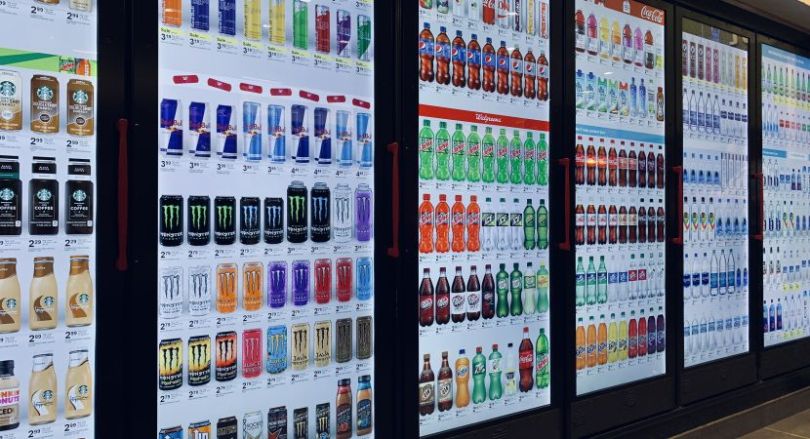
Cooler Screens is developing IoT-enabled screens for retail coolers and freezers— think the grocery store cold food aisle — designed to enhance the consumer experience and unlock new marketing opportunities.
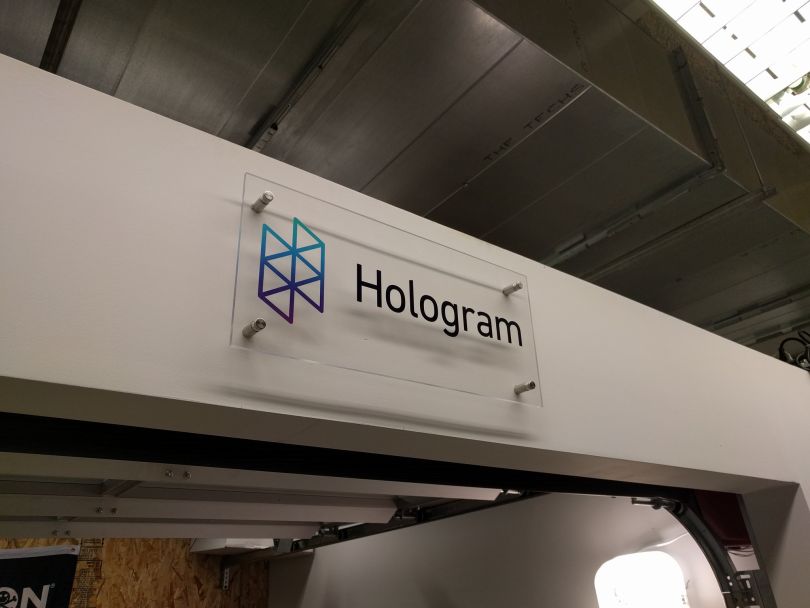
Hologram makes tools for bringing connected devices online. Founded in 2013, the Chicago startup sells global SIM cards that let companies bring their IoT devices online more or less anywhere in the world without relying on Wi-Fi or worrying about which mobile carrier to use. Hologram also provides a range of software for aggregating, monitoring and analyzing data gathered by IoT devices and for managing those devices remotely.




</article
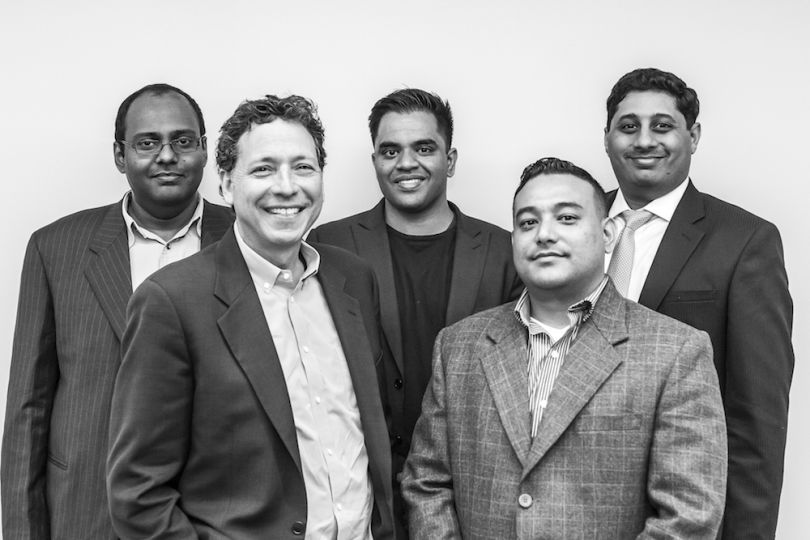
As more devices around us start connecting to the internet, security vulnerabilities are becoming a major issue. And the challenge of IoT device vulnerability is exacerbated by the fact that many smart device manufacturers specialize in making industrial equipment and consumer gadgets — not cybersecurity. Xaptum is an IoT infrastructure provider whose technology takes care of the “internet” part of the equation. By delivering precise, efficient and safe data exchange capabilities, the startup lets equipment manufacturers focus on what they do best.
spacer
Special Annual Meeting in Singapore … – World Economic Forum
Smart Nation: Singapore is set to enter a brave new …
Smart IoT Singapore is primed to be the most exciting showcase of innovative technologies and solutions.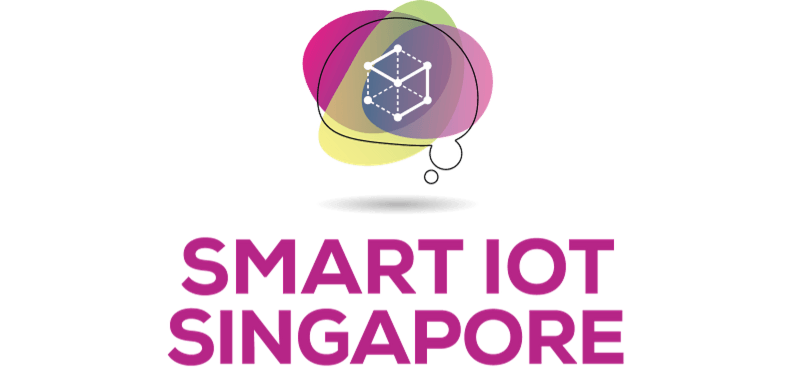
Wherever you are on your IoT journey – whether you’re exploring how to become a data-centric business, or looking at the next steps of securing, analysing and integrating data with your existing or new applications and processes – this is the only place to be. Come and address the key issues on Smart Cities, digital transformation, business model disruptions and more.
Co-located with Asia’s largest enterprise technology event – Technology for Marketing Asia, the event stack welcomed over 21,897 (BPA audited) technology buyers and professionals in 2019!
spacer

The future of the IoT in Singapore
By Ang Thiam Guan December 14, 2015
- 50bil connected devices also means 50bil different possible points of attack
- The IoT will cease to exist … no, really!
THE world is on the cusp of another transformative technology revolution, where in the words of Wired magazine, “the most mundane items in our lives can talk wirelessly among themselves, performing tasks on command, giving us data we’ve never had before.”
The Internet of Things (IoT) revolution will see up to 50 billion devices connected to the Internet by 2020, the equivalent of six devices for every person on the planet.
Singapore has recognised the potential of the IoT and is in the process of harnessing its capabilities to become the world’s first ‘Smart Nation.’
Initiatives include the creation of smart homes, where the collection and analysis of data will help optimise energy consumption, litter collection and parking availability; as well as smart mobility, which will help Singaporeans plan their commute better.
To this end, the Infocomm Development Authority of Singapore (IDA) recently announced that the Government will call for an estimated S$2.2 billion (US$1.6 billion) worth of ICT tenders this year, of which Smart Nation initiatives will be a key focus area.
The IoT provides tremendous opportunities for businesses to bring innovative solutions to the market and transform their own operations.
Either way, businesses in Singapore should pay close attention to what the future holds for the IoT.
READ ALSO: E-government is passé, it’s digital government now: Ovum
Here are 10 predictions for things to look out for:
1) Security takes top priority
Cyber-attacks cost companies US$400 billion every year and Singapore is no safer from attacks than any other country.
News recently emerged that Singapore’s Ministry of Foreign Affairs’ (MFA) IT systems suffered a breach last year and the Government sent a strong message with the launch of the Cyber Security Agency earlier this year.
Although the IoT offers the potential to revolutionise the way we work, live and play, 50 billion connected devices also means 50 billion different possible points of attack for hackers.
Enterprises and governments are looking for robust security solutions to ensure that their systems, data, business partners, customers and citizens are safe, and will increasingly look to providers that inspire trust in their products through its policies, processes, supply chain, partners, as well as a transparent and open company culture.
2) IoT will force business transformation
Businesses that were connected to the Internet saw the real value when they re-designed their businesses models and processes for a connected world, and found new online products and services to offer.
Some companies immediately embraced the dotcom world, while many had false starts or took a long time to jump on, or the revolution just passed them by completely.
The same will be true of the IoT. Businesses need to develop strategies and plans for how they can leverage IoT to transform all aspects of their businesses and capture the real value of this revolutionary technology.
3) The platform is the key to success
The ‘things’ will get increasingly cheaper, applications will multiply and connectivity will cost pennies.
The real value will be created in the horizontal platform that ties it all together – the new OS (operating system). This platform will be composed of three different layers: Management, infrastructure, data analytics and insights.
4) Both consumers and enterprises will be increasingly concerned about data privacy and security
When people, processes, data and things are connected, there is an incredible opportunity to change lives, create new revenue streams, compete with disruptive competitors, deliver better experiences and use new operating models to drive efficiency and value.
However, with the incredible amount of data being shared between devices, it will become a mandatory skill for both consumers and enterprises to pay attention to what kind of data is being shared, where it is being sent to and how it is being transmitted.
5) The industry will look completely different than it does today
Like in the early days of the Internet, the IoT is a greenfield market. New players, with new business models, approaches and solutions can appear out of nowhere and overtake incumbents.
6) Business is the key market
While there is a lot of talk about wearables, the real value and immediate market for IoT is with businesses and enterprises.
The adoption of the IoT will be much more like the traditional IT diffusion model (businesses to consumers) than the consumer-led adoption of social media and personal mobility.
7) It will be about much more than the ‘things’
The currency of the IoT will be data. But this new currency only has value if the masses of data can be translated into insights and information which can be converted into concrete actions that will transform businesses, change people’s lives and effect social change.
8) The ‘Connected Car’ will be all about the car
There is currently a lot of hype about turning your car into a mobile entertainment centre – music, video, social media and all of the apps that we currently enjoy on our smartphones.
However, the real value and transformation is in connecting the car operations (e.g., service updates, advanced notifications of failures) and drastically improving safety (e.g., inter-car communications, semi-autonomous driving).
These services will most likely be paid for by the manufacturer or through new, alternative business models, rather than directly by the driver.
With Singapore’s dense car population as well as relatively short travel times in comparison to other countries, these are the features that will differentiate car models and manufacturers.
9) There will be a battle for IoT application mindshare
With billions of devices projected to be spewing out petabytes of data, application developers will have a field day launching thousands, or even millions, of new and cool apps.
But, like the smartphone world, all of these apps will be fighting for mindshare and only a few will rise to the top to be valued by businesses and consumers.
10) IoT will cease to exist
Terms like ‘e-commerce,’ ‘the Net’ and ‘WWW’ are all quaint reminders of how the Internet has ceased to be an exciting and mysterious new thing, and like electricity, is now just a part of our daily lives.
The Internet of Things will go the same way. One day and soon enough, it will be hard to imagine that all things weren’t connected and that the extraordinary benefits of IoT hadn’t always been with us.
Ang Thiam Guan is managing director, Singapore & Brunei, at Cisco.
SPACER

|



 Image: Bigstock
Image: Bigstock















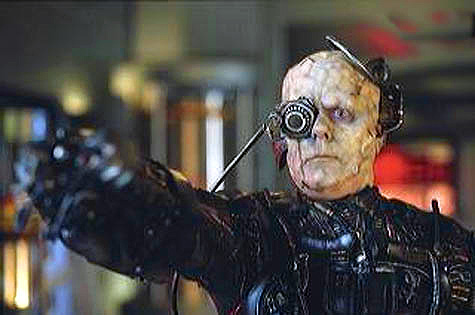
Comments are closed.